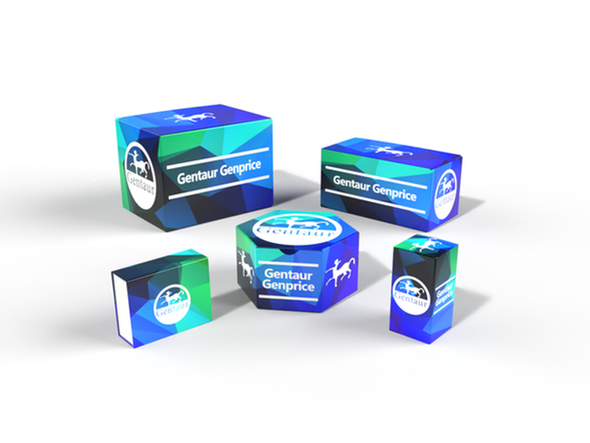BW
GluR4 (phospho-S862) polyclonal Antibody | BS4690
- SKU:
- BW-BS4690
- Availability:
- Usually ships in 5 working days
Description
GluR4 (phospho-S862) polyclonal Antibody | BS4690 | Gentaur UK, US & Europe Distribution
Host: Rabbit
Reactivity: Human,Mouse,Rat
Application: WB
Application Range: WB: 1:500~1:1000
Background: Glutamate receptors mediate most excitatory neurotransmission in the brain and play an important role in neural plasticity, neural development and neurodegeneration. Ionotropic glutamate receptors are categorized into NMDA receptors and kainate/AMPA receptors, both of which contain glutamate-gated, cation-specific ion channels. Kainate/AMPA receptors are co-localized with NMDA receptors in many synapses and consist of seven structurally related subunits designated GluR-1 to -7. The kainate/AMPA receptors are primarily responsible for the fast excitatory neuro-transmission by glutamate, whereas the NMDA receptors are functionally characterized by a slow kinetic and a high permeability for Ca2+ ions.
Storage & Stability: Store at 4°C short term. Aliquot and store at -20°C long term. Avoid freeze-thaw cycles.
Specificity: p-GluR4 (S346) polyclonal Antibody detects endogenous levels of GluR4 protein only when phosphorylated at Ser862.
Molecular Weight: ~ 100 kDa
Note: For research use only, not for use in diagnostic procedure.
Alternative Names: Glutamate receptor 4; GluR-4; GluR4; AMPA-selective glutamate receptor 4; GluR-D; Glutamate receptor ionotropic, AMPA 4; GluA4; GRIA4; GLUR4
Immunogen: Synthetic phosphopeptide derived from human GluR4 around the phosphorylation site of Serine 862.
Conjugate: Unconjugated
Modification: Phosphorylation
Purification & Purity: The Antibody was affinity-purified from rabbit antiserum by affinity-chromatography using epitope-specific immunogen and the purity is > 95% (by SDS-PAGE) .
Pathway: Notch Signaling,Nuclear Receptor Signaling,Cell Cycle Control G1 S Checkpoint,DNA Methylation,Epigenetic Writers and Erasers of Histone H3,Epigenetic Writers and Erasers of Histones H2A H2B and H4,






